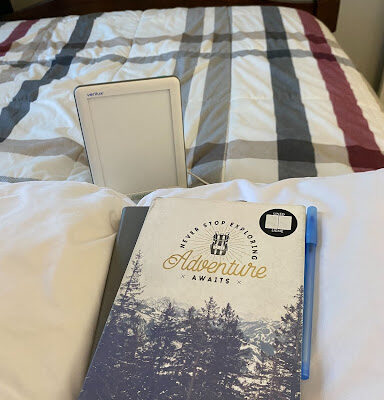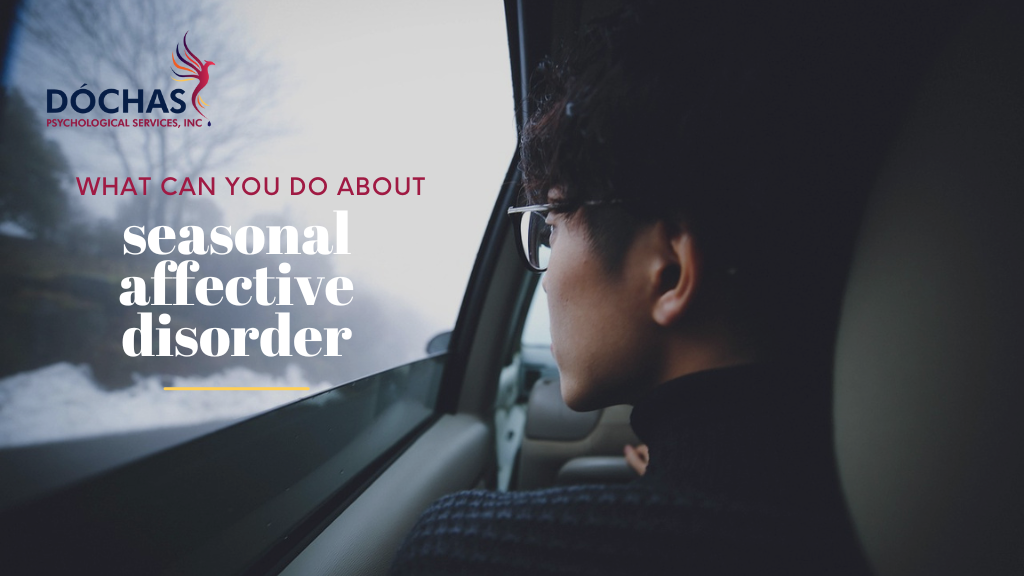As someone who suffers from regular old depression and who lives in a northern city, it’s no surprise I experience seasonal affective disorder (the appropriate acronym is SAD, so fitting). The darker and colder months can feel like a double whammy of not wanting to get out of bed and not having any energy. Even if you don’t experience clinical depression, SAD may have an impact on you. It’s Amelia on the Dóchas blog today, and I’m going to explain why so many people experience SAD and what you can do about it.

The most common symptoms of SAD are loss of energy, low motivation, and a hard time leaving your bed. This happens specifically in the darker months, typically from October to March, but you can feel impacted longer than that.
So, why do so many people experience SAD? The lack of sunlight plays a major role in SAD. Did you know that in October, the amount of daylight lessens by approximately 4 minutes and 15 seconds a DAY? That is a HUGE difference, and while there is 11 hours and 36 minutes of daylight on October 1st, there is 9 hours and 38 minutes of daylight by October 31st. By December 21st, the shortest day of the year, we have less than 8 hours of sunlight, meaning ⅔ of our day is spent in darkness. If you enjoy nerding out about sunset/ sunrise times, you can find more info here.

So now that we know SAD is related to lack of sunlight and just how fast we lose light in the winter months (not to mention it’s COLD OUTSIDE), what can we do about it?
I’ll start by sharing my routine to maintain my mental health in the darker months.
My Daily Routine
The first tip is to actually establish a routine—that means that as much as you want to stay in bed, you wake up at the same time every day. I use a sunrise alarm clock, which is much nicer to wake up to than a sound jerking me awake. I then wake up gradually to light, which is the nemesis of the chronic darkness of winter.
After I tranquilly float out of bed (yeah, right), I start my morning routine. This also encompasses light in the form of Sunlight therapy—a light that mimics the light of the sun, so my brain thinks that I am getting sunlight and alleviates the depression espresso that comes from too much darkness. You should look for a sunlight therapy light that has 10,000 LUX, which is comparable to daylight.
My brain is then tricked into thinking I am getting sunlight and am happier.

As I fool my brain with my therapy light, I journal to get my thoughts out so they stop living in my head rent-free. My clients know I preach journaling, which is integral to my self-care routine. I also use a CBT app for a daily mental health check-in and finish my morning routine with some yoga. Everyone has their own time where they feel most productive, so think about the best time of day to incorporate self-care into your routine, but the therapy light is best used in the mornings.
Here’s what my morning setup looks like:

Another part of my routine is regular exercise, to help maintain overall well-being. This part of the routine is a balance of listening to your body (not working out if you’re sick, not pushing yourself too far, etc.), but scheduling and maintaining a routine to move your body in the colder months. And this will also help stave off SAD (because really, who wants to be SAD?)

This morning routine has really helped me manage my symptoms. I hope that gives you an idea of something to try. But sometimes handling low moods can be hard to navigate on your own, which is why Dóchas is here to help. If you need support, reach out to us here at 780 446 0300 or info@dochaspsych.com.
About Dóchas Psychological
Dóchas Psychological Services is a well-established and trusted therapy clinic located in Spruce Grove, Alberta. At Dóchas we value the idea that everyone deserves a safe space. Through connection and education, our team works hard to build a trustworthy relationship with each of our clients. It is our goal to create a community for our clients to feel like they belong.
Disclaimer
Information provided through Dóchas Psychological Services blogs or vlogs is meant for educational purposes only. They are NOT medical or mental health advice. You can read more about our disclaimer here.

